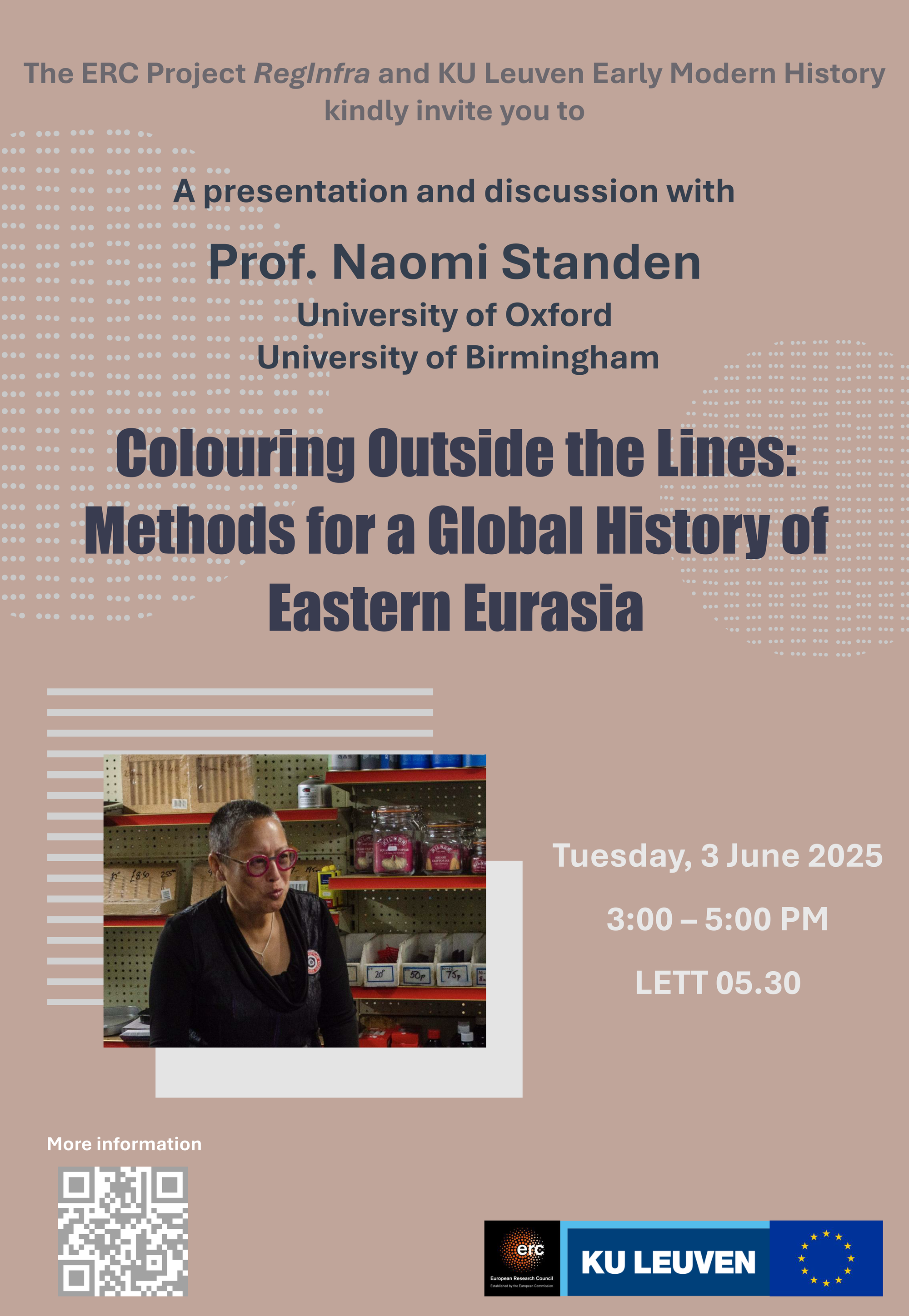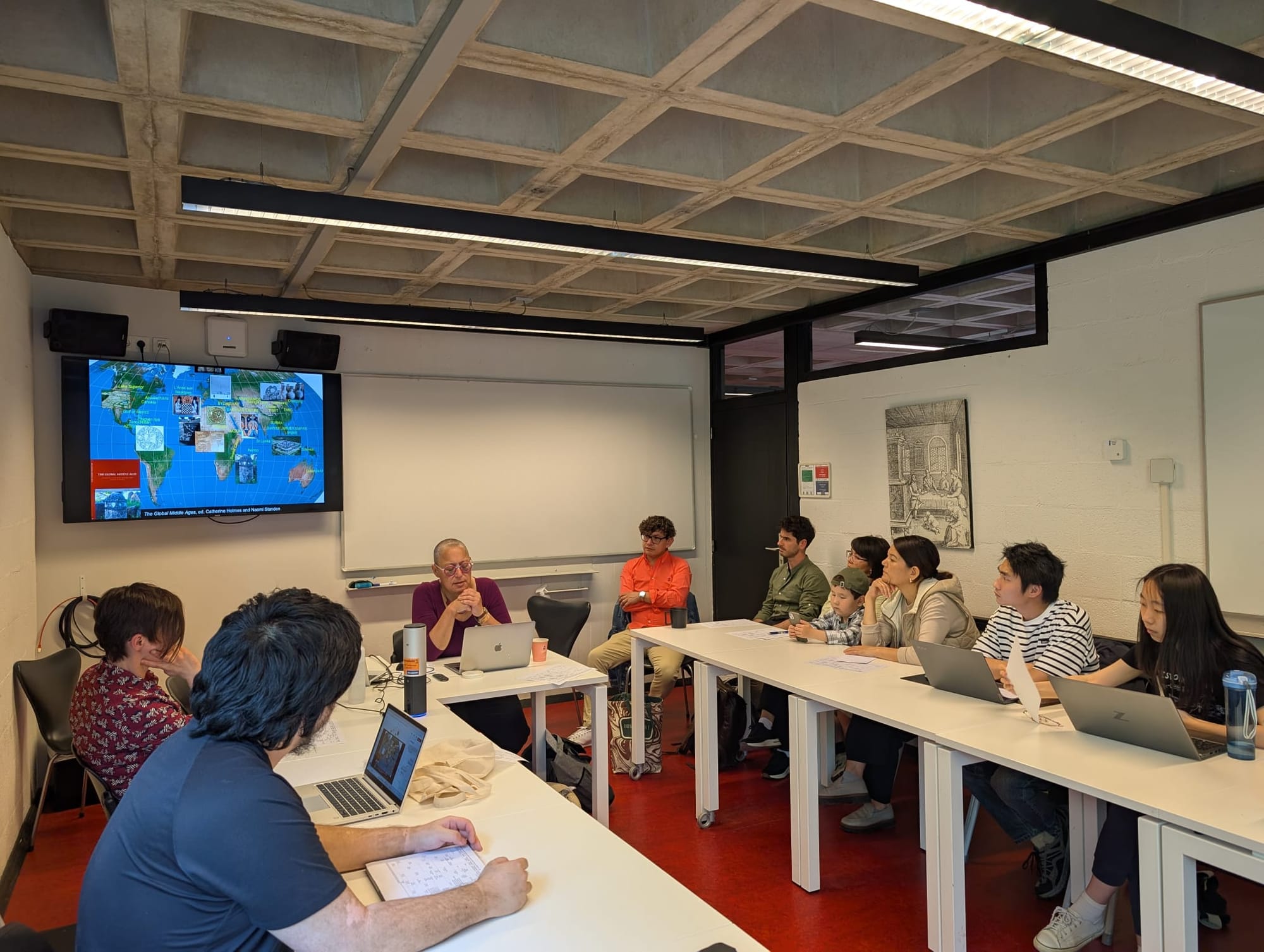

The ERC Project “Regionalizing Infrastructures in Chinese History” and KU Leuven Early Modern History Research Group organized a presentation and discussion with Prof. Naomi Standen (University of Oxford and University of Birmingham). The talk, titled Colouring Outside the Lines: Methods for a Global History of Eastern Eurasia took place on Tuesday, June 3, from 3:00 to 5:00 PM at KU Leuven.
About the talk: We are still working out how to do global history, especially for premodern periods. How do we achieve the necessary shift in scale without falling back on standard definitions of categories like states, ethnicity, religion, urbanisation, when these are increasingly challenged at the specialist level? This paper uses the layout and working of cities as an avenue for exploring how global history can avoid reverting to familiar themes such as power, empires, money, wars and men. My interest lies in everyday creativity, and the paper takes a materialist and feminist approach, emphasising practices above ideology, action over identity, and attending to detail. I suggest that useful techniques include thinking in layers rather than blocks, rejecting ethnocentricity, emphasising exchange over competition, avoiding narrative arcs, and not using words like ‘China’. My intention is to disrupt the reemergence in the new venue of global history of essentially national narratives, by pushing continuous critique of basics like our vocabulary, compelling consideration of what we really mean, and thereby revealing our underlying assumptions for ongoing reevaluation. Meanwhile, some may worry that developing a ‘global Middle Ages’ risks becoming a neocolonial move: here I will suggest that by globalising our approaches to the premodern we may find alternatives to help us to recover the political initiative in the present day.
Prof. Naomi Standen was Professor of Medieval History at the University of Birmingham until she left academia and began a new life in environmental sustainability. Her research has been concerned with northern Eurasia in global contexts, starting out from the ground-level functioning of borderlands, especially in the Liao (or as she now calls them, the Qïtai). She has worked with texts, with archaeologists, and with medievalists studying all parts of the globe, finding an ever increasing interest in material culture, technologies, and everyday life. Publications include Unbounded loyalty: frontier crossings in Liao China (2007), and co-editing The Global Middle Ages (Past and Present supplement, 2018). Her valedictory academic project is Digging, weaving and dancing: a global history of everyday creativity in eastern Eurasia, 7th to 14th centuries (to be submitted this year).